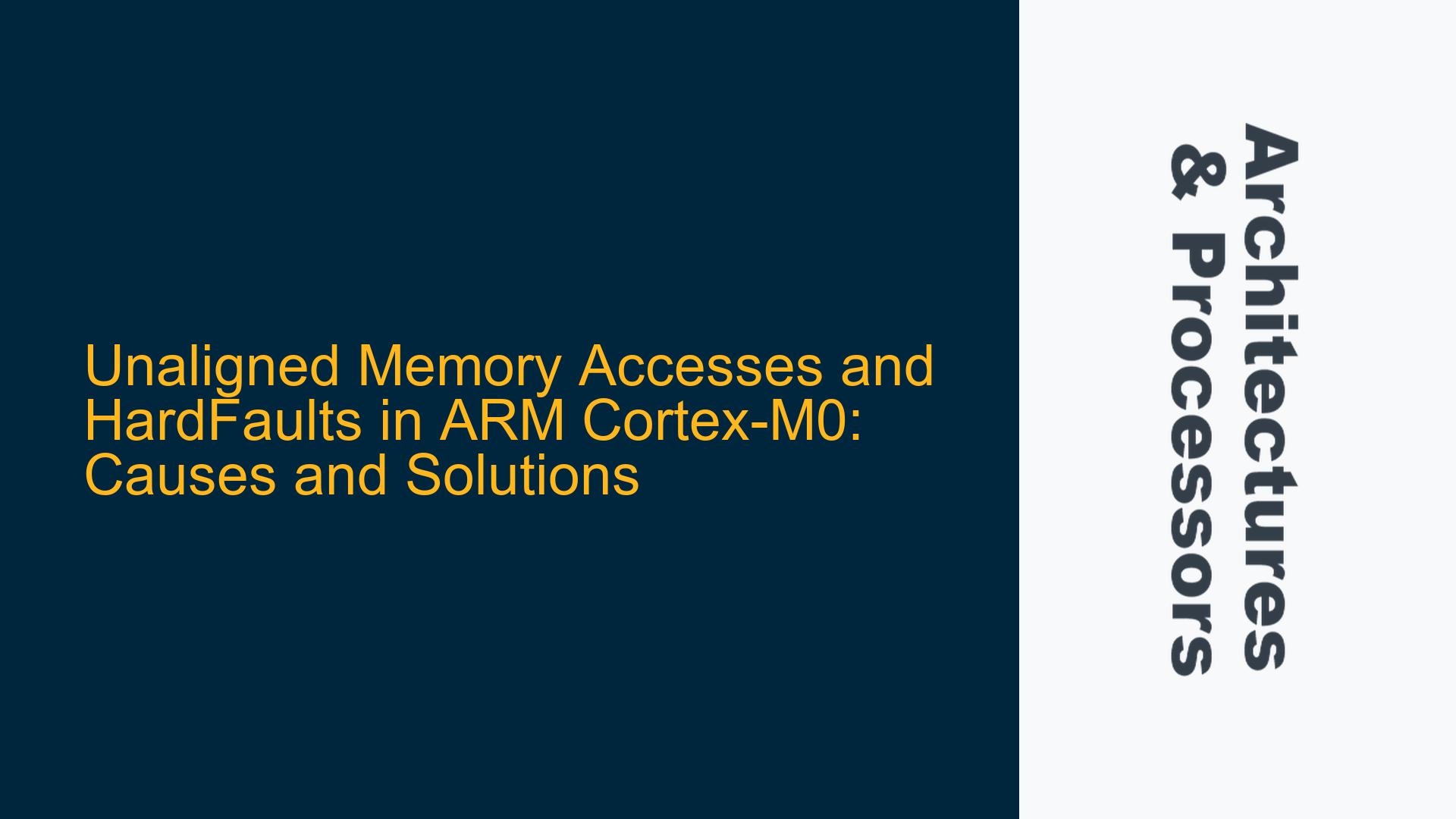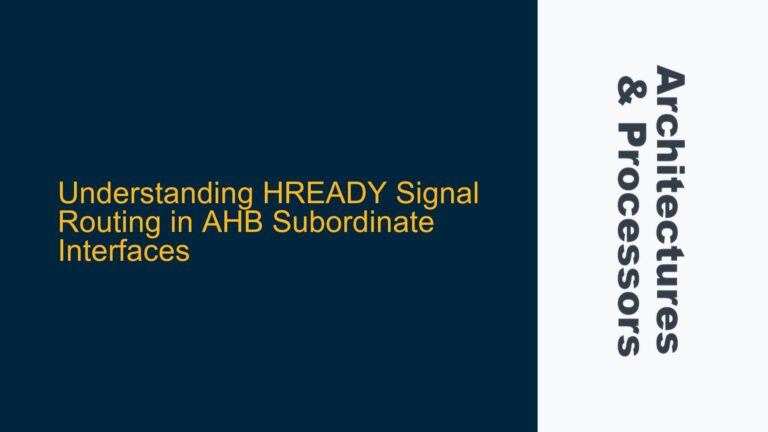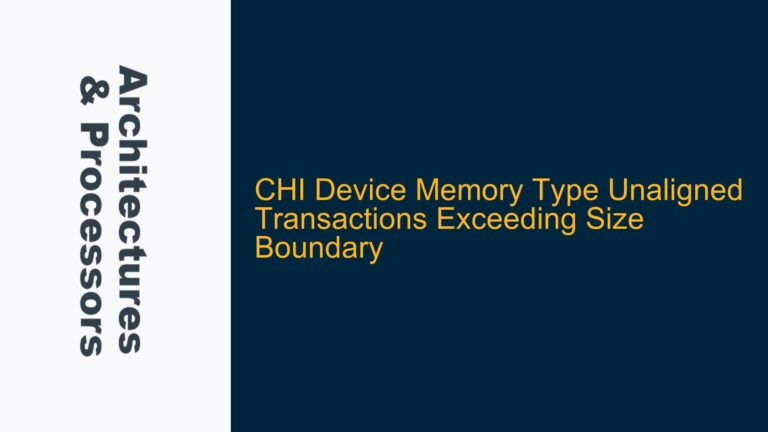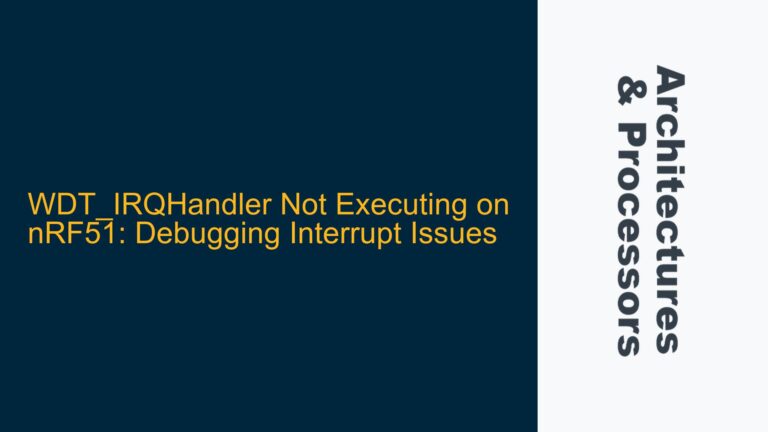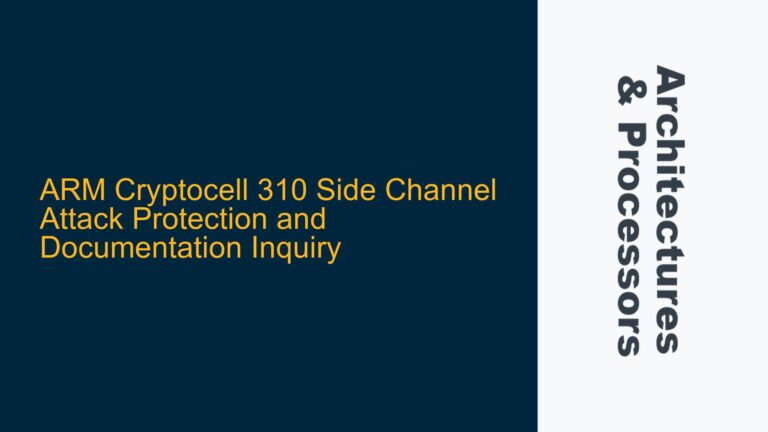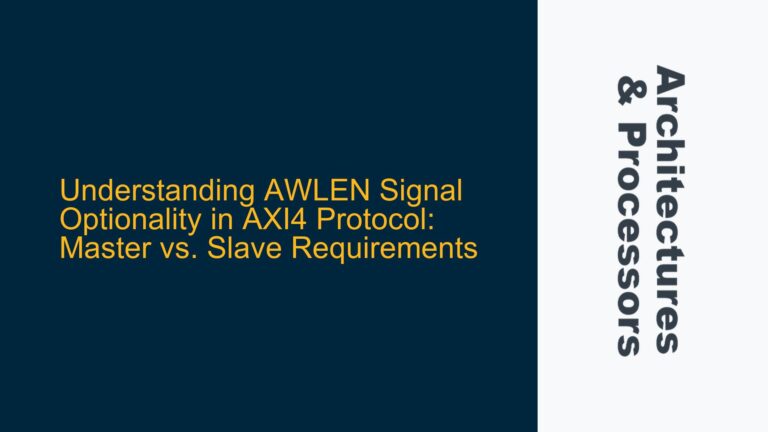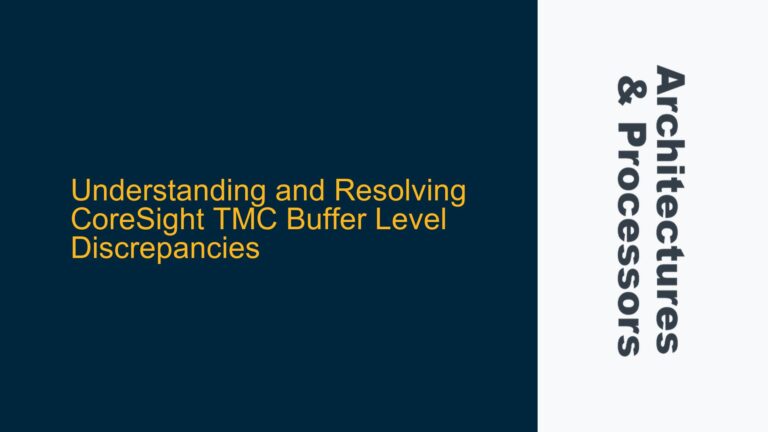ARM Cortex-M0 Unaligned Access Handling and HardFault Generation
The ARM Cortex-M0, as a member of the Cortex-M series, is designed with a simplified architecture that prioritizes efficiency and low power consumption. One of its key characteristics is its handling of memory accesses, particularly unaligned accesses, which can lead to HardFaults if not managed correctly. Understanding how the Cortex-M0 handles unaligned accesses is crucial for both firmware developers and hardware engineers working with this processor.
The Cortex-M0 architecture enforces strict alignment requirements for certain types of memory accesses. Specifically, instruction fetches must be aligned to 4-byte boundaries, and unaligned accesses to code memory will result in a HardFault. This behavior is implemented in the hardware, specifically in the instruction fetch unit, which checks the alignment of the program counter (PC) before fetching instructions. If the PC points to an unaligned address, the processor will trigger a HardFault exception.
For data accesses, the Cortex-M0 is more lenient but still imposes performance penalties for unaligned accesses. While the processor can handle unaligned data accesses, it does so by splitting the access into multiple aligned accesses, which can degrade performance. This behavior is managed by the compiler, which generates code to handle unaligned data accesses appropriately. However, if the compiler is unaware of the unaligned access, the processor will still execute the access, but with a performance penalty.
The interaction between the compiler and the hardware is critical in ensuring that unaligned accesses are handled correctly. The compiler must generate code that adheres to the alignment requirements of the Cortex-M0, while the hardware must enforce these requirements and handle any violations appropriately. This interplay between software and hardware is a key aspect of working with the Cortex-M0 and understanding it is essential for avoiding HardFaults and optimizing performance.
Compiler Behavior and Hardware Enforcement of Alignment Requirements
The behavior of the compiler and the hardware in enforcing alignment requirements is a complex interplay that can lead to subtle issues if not properly understood. The GCC compiler, commonly used for ARM Cortex-M0 development, has specific behaviors when it comes to handling unaligned accesses. During compilation, the compiler will attempt to align data structures and variables to their natural boundaries, but this behavior can vary depending on the optimization level and specific compiler flags used.
For example, when compiling code with the -O0 flag (no optimization), the compiler may place each variable on a word boundary, even if this results in wasted space. This behavior can mask bugs in the code, such as when a developer assumes that a 4-byte array is aligned to a word boundary and casts it to a float. In such cases, the code may work correctly during development but fail in production when the compiler optimizes for size and packs the variables more tightly.
The __attribute__((packed)) attribute can be used to force the compiler to pack data structures without padding, which can lead to unaligned accesses. When this attribute is used, the compiler will generate code to handle the unaligned accesses, typically by splitting the access into multiple aligned accesses. However, this can result in a performance penalty, as the processor will need to execute additional instructions to handle the unaligned access.
The hardware’s role in enforcing alignment requirements is equally important. The Cortex-M0’s instruction fetch unit checks the alignment of the program counter before fetching instructions. If the PC points to an unaligned address, the processor will trigger a HardFault exception. This behavior is implemented in the RTL (Register Transfer Level) of the processor, specifically in the instruction fetch logic. The RTL code will check the least significant bits of the PC and trigger a HardFault if they are not zero.
For data accesses, the Cortex-M0 does not enforce strict alignment requirements, but it does handle unaligned accesses by splitting them into multiple aligned accesses. This behavior is managed by the processor’s load/store unit, which will detect unaligned accesses and handle them appropriately. However, this can result in a performance penalty, as the processor will need to execute additional instructions to handle the unaligned access.
Debugging and Resolving Unaligned Access Issues in Cortex-M0 Firmware
Debugging and resolving unaligned access issues in Cortex-M0 firmware requires a thorough understanding of both the compiler’s behavior and the hardware’s enforcement of alignment requirements. The first step in debugging these issues is to identify the source of the unaligned access. This can be done by examining the disassembled code and looking for instructions that access memory at unaligned addresses.
One common source of unaligned accesses is the use of packed data structures. When a data structure is packed, the compiler will not insert padding bytes to align the structure’s members, which can result in unaligned accesses. To resolve this issue, the developer can either avoid using packed data structures or ensure that the compiler generates code to handle the unaligned accesses correctly. This can be done by using compiler-specific attributes or pragmas to control the alignment of data structures.
Another common source of unaligned accesses is the use of pointer casting. When a pointer is cast to a different type, the resulting pointer may point to an unaligned address. To resolve this issue, the developer should ensure that the pointer is properly aligned before casting it. This can be done by using alignment-specific functions or macros to ensure that the pointer is aligned to the required boundary.
In some cases, unaligned accesses may be caused by stack overflows or buffer overflows. These issues can be more difficult to debug, as they may not manifest immediately and can be dependent on the specific runtime conditions. To resolve these issues, the developer should use tools such as stack canaries or memory protection units (MPUs) to detect and prevent stack overflows and buffer overflows.
Once the source of the unaligned access has been identified, the developer can take steps to resolve the issue. This may involve modifying the code to ensure that all memory accesses are aligned, or it may involve using compiler-specific attributes or pragmas to control the alignment of data structures. In some cases, it may be necessary to modify the hardware design to ensure that all memory accesses are aligned.
In conclusion, unaligned accesses in ARM Cortex-M0 firmware can lead to HardFaults and performance penalties if not handled correctly. Understanding the behavior of the compiler and the hardware in enforcing alignment requirements is essential for debugging and resolving these issues. By following the steps outlined in this guide, developers can ensure that their firmware is free from unaligned access issues and optimized for performance.
